Bucky on Parade feature: Philip Salamone
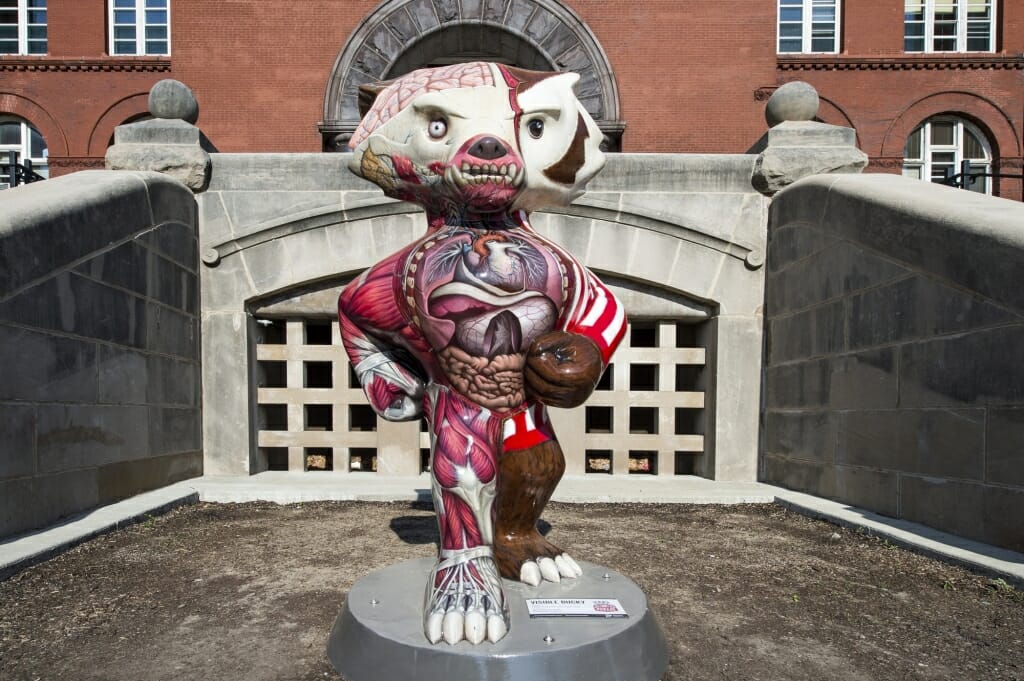
Visible Bucky, which was created by artists Philip Salmon and Sarah Gerg, is pictured outside Science Hall. (Photo by Bryce Richter) Photo: Bryce Richter
This summer we will feature a weekly Q&A with an artist who created one of the Bucky on Parade statues on UW’s campus to understand their artistic process, their inspirations, and why they love Bucky.
Bucky: Visible Bucky (Science Hall)
Artist: Philip Salmone (with help from Sarah Gerg)
What is your history as an artist?
My entire life I have always wanted to make artwork that is beautiful, skillful, and meaningful. I have always loved working from life rather than using photography and finding people who knew how to paint like the old masters that I aspired to was next to impossible. After graduating from college here at the University of Wisconsin, I eventually discovered a teacher … and in 2006 moved to New York City to study a classical, traditional approach to drawing and painting. After three years of training, I returned to Madison to make artwork, build a community of artists, share what I had learned, and to continue learning from others. I currently teach at UW and at my studio/school the Atwood Atelier.
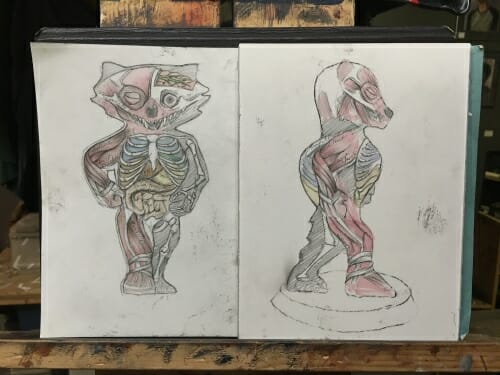
An early sketch done by Philip Salamone of the complex anatomy “inside” Visible Bucky. CREDIT: PHILIP SALAMONE
What inspired you to come up with this take on Bucky?
I closed my eyes, looked deep within me, and that’s what I saw.
What idea or message do you hope people get out of this piece of art?
Art is a visual language. If I could convey the message in words, then why paint?
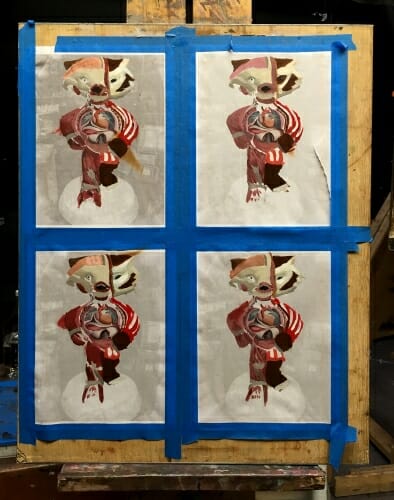
Reference paintings done by Philip Salamone before he embarked on painting his 6-foot-tall Bucky statue. CREDIT: PHILIP SALAMONE
What was the process of creating your Bucky like?
I applied with two different designs, but this was the one that was chosen. I started with a number of thumbnails, sketches, color studies, and scoured the internet for over 300 reference images. When I felt like I had an idea of what I wanted, I began sketching on the statue with vine charcoal (~80 hours). I then fixed the drawing with workable fixative and began painting. The entire piece was done in acrylic paint and took 450 hours total. One hundred of those hours were done by my assistant, Sarah Gerg. The project was challenging, but very fun. I enjoyed the opportunity to study anatomy as well working with acrylics again. I underestimated how long it would take, and when I started to realize how much work was ahead of me, I was already enthusiastic about the design and felt committed. Sarah’s help was invaluable.
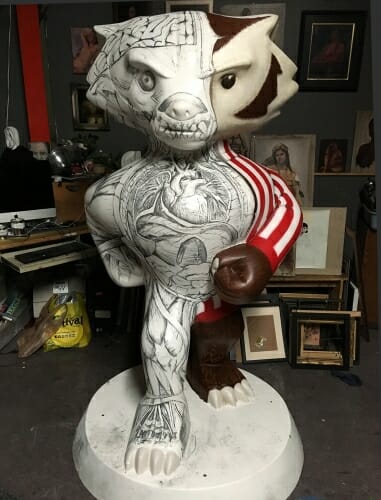
Salamone used vine charcoal to sketch out the anatomy of Visible Bucky before he began painting – a process that took 80 hours. CREDIT: PHILIP SALAMONE
Of the other Bucky Badgers created, which ones do you like best?
My favorite Buckys were the ones that embraced the object as a three-dimensional piece of sculpture rather than making a painting or design that could have been done on a 2D piece of canvas without relating to the form at all. That said there were a lot of ones treated it almost as a 2D canvas that I liked a lot. Please don’t make me choose – I liked so many of them.
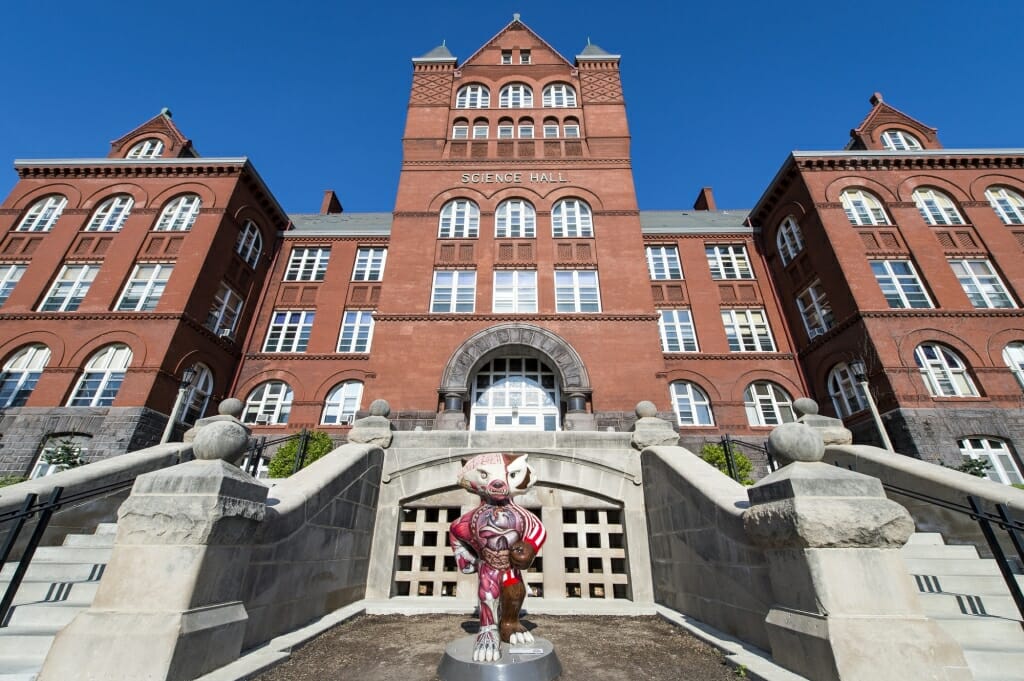
(Photo by Bryce Richter / UW–Madison) Photo: Bryce Richter
Tags: arts, Bucky Badger




